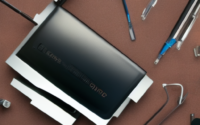How 5G Could Transform Internet of Things (IoT) Connectivity
How 5G Could Transform Internet of Things (IoT) Connectivity
Introduction to 5G and IoT:
5G is the fifth generation of cellular network technology that promises unprecedented speed, lower latency, and higher bandwidth compared to its predecessors. This technology has the potential to revolutionize various industries, including the Internet of Things (IoT). IoT refers to a network of interconnected devices that collect and exchange data over the internet without human intervention. By combining the capabilities of 5G with IoT, we can expect to see significant advancements in connectivity, efficiency, and innovation.
Enhanced Connectivity and Speed:
One of the key features of 5G technology is its remarkable speed. With speeds up to 100 times faster than 4G, 5G networks can handle large amounts of data at lightning-fast speeds. This means IoT devices can communicate and transfer data more efficiently, leading to real-time processing and analysis. The low latency of 5G also ensures minimal delay in data transmission, making it ideal for critical applications that require immediate responses.
Increased Device Density:
Another advantage of 5G is its ability to support a massive number of devices within a small area. This is particularly beneficial for IoT environments where hundreds or even thousands of devices need to connect simultaneously. By increasing device density, 5G enables seamless connectivity among IoT devices without compromising performance or network stability. This opens up new possibilities for smart cities, industrial automation, healthcare monitoring, and more.
Energy Efficiency:
5G technology is designed to be more energy-efficient compared to previous generations of cellular networks. This is crucial for IoT devices, especially those powered by batteries or renewable energy sources. By reducing the energy consumption of connected devices, 5G helps prolong battery life and lower operational costs. In addition, the efficient use of resources contributes to a more sustainable IoT ecosystem.
Edge Computing Capabilities:
With 5G, processing and computing tasks can be offloaded to the network edge, closer to where data is generated. This concept, known as edge computing, minimizes latency and ensures faster response times for IoT applications. By leveraging edge computing capabilities, IoT devices can perform complex computations locally without relying solely on centralized cloud servers. This distributed architecture enhances the overall performance and reliability of IoT systems.
Security and Privacy Considerations:
As IoT devices become more interconnected and reliant on 5G networks, cybersecurity and data privacy become paramount concerns. To address these challenges, industry stakeholders must implement robust security measures to protect sensitive information and prevent unauthorized access. Encryption, authentication protocols, and secure communication channels are essential components of a secure IoT ecosystem. By prioritizing security and privacy considerations, businesses and consumers can confidently adopt 5G-enabled IoT solutions.
Challenges and Roadblocks:
Despite the promising benefits of 5G for IoT connectivity, there are several challenges and roadblocks that need to be overcome. One major obstacle is the high cost of infrastructure deployment and network upgrades required to support 5G technology. Additionally, ensuring interoperability among different IoT devices and platforms remains a complex task. Standardization efforts and collaboration across industries are essential to address these challenges and drive widespread adoption of 5G-enabled IoT solutions.
Future Outlook and Potential Applications:
The combination of 5G and IoT holds immense potential for transforming various sectors, including healthcare, transportation, manufacturing, agriculture, and smart cities. In healthcare, 5G-enabled IoT devices can enable remote patient monitoring, telemedicine services, and real-time health data analytics. In transportation, connected vehicles and smart infrastructure powered by 5G can enhance road safety, traffic management, and autonomous driving capabilities. The possibilities are endless, and as 5G networks continue to expand globally, we can expect to see a proliferation of innovative IoT applications that redefine how we interact with technology and the world around us.

